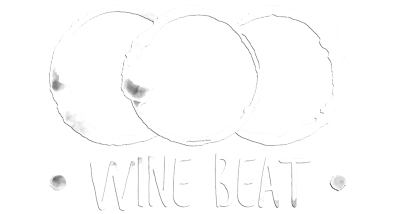 Verdejo has made its home on Rueda’s high plains
Verdejo has made its home on Rueda’s high plains
Wine grapes are a little bit like people when it comes to transplanting themselves to new places. Some grapes are vagabonds and move all around the globe and are comfortable settling wherever seems nice. Chardonnay is like that. Then there are grapes who leave the place they spent their childhood, find a new home, settle down and are happy not to move much after that. Verdejo is like that. Verdejo arrived in Rueda from North Africa and it liked the location and it stayed. Admittedly it is grown in a few other places but on the whole you would say that Verdejo has decided that Rueda suits it very well and it really doesn’t need to go galavanting around the world.
The history is not crystal clear but it seems certain that the vine came from North Africa with the Moorish conquest of the Iberian peninsula around 700 AD . The Moors, being Muslim, did not keep records of how Verdejo might have been used for wine making. But after their expulsion from the area in the 11th century winemaking flourished. The Verdejo vineyards established during the time of the Moors provided the raw material for viticulture and winemaking to prosper. Verdejo found that people really liked it – they liked to grow it and they liked the wine it made – and so Verdejo settled in and made Rueda its true home.
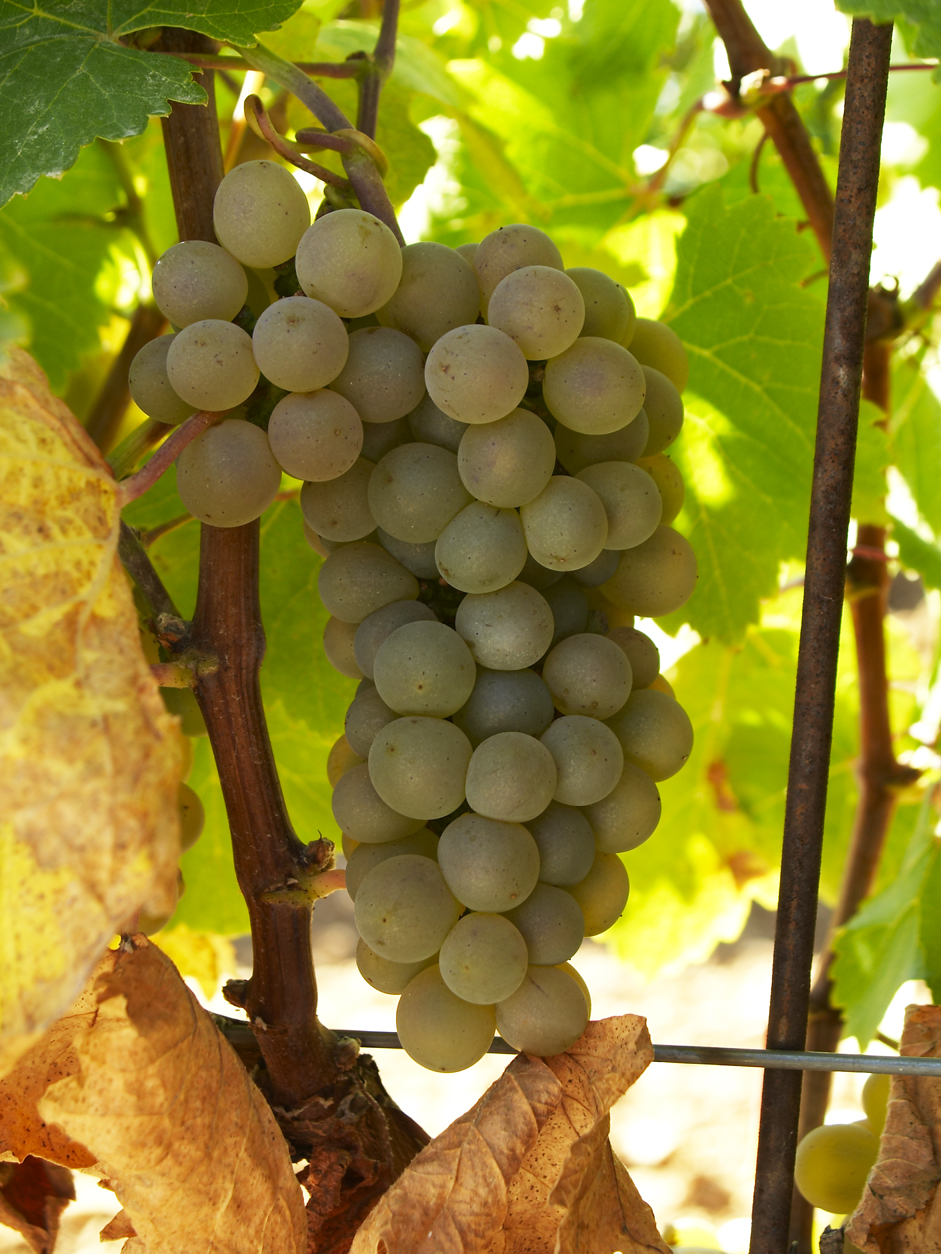 Verdejo grapes
Verdejo grapes
Why Rueda for Wine?
In Rueda about 90% of all wine grapes grown are Verdejo. For winedrinkers Rueda is synonymous with Verdejo. There have been some ups and downs with phylloxera devastation at the turn of the century and some diversions into cheap bulk wine making in the middle of the century, but starting in the ‘70s Verdejo began its ascent to international stardom. The transformative moment occurred when the Rioja giant, Bodegas Marqués de Riscal, went in search of an opportunity to make exceptional white wine and saw the potential of Verdejo in Rueda. In this high arid plateau with its stony, nutrient-deficient soils, the vines struggle to produce significant quantities of fruit. But there are minerals to be found in the stone and sand, such as calcium and magnesium, and the dryness of the area means organic farming is viable. When the vines are well tended, the results can be magnificent. The wines have very pronounced character, fresh and lively, but very resonant with fruit, floral and spice tones. Verdejo makes the kind of wine Marqués de Riscal was looking for: modern and alive but with the soul and depth that match Spain’s great red wines.
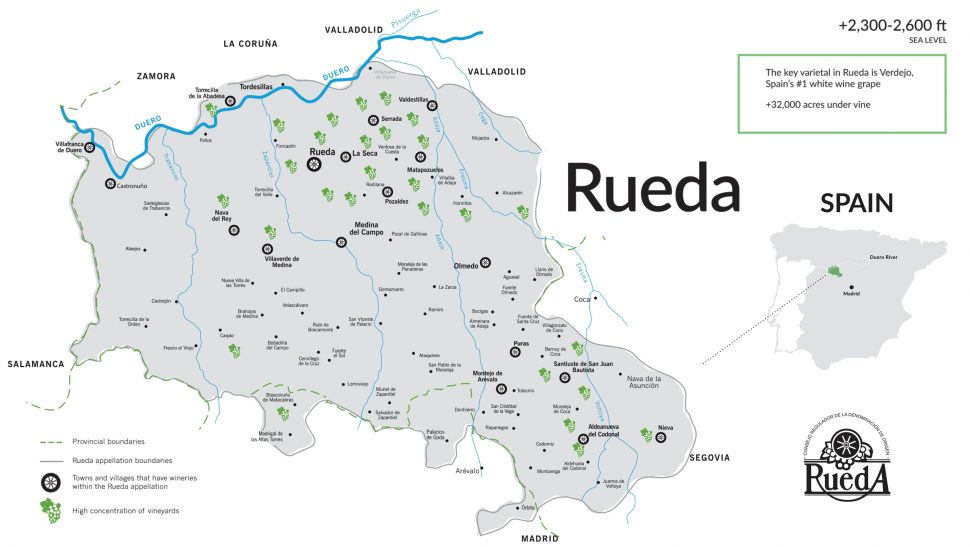 Rueda is just 2 hours from Madrid
Rueda is just 2 hours from Madrid
Where Is Rueda?
Located only 2 hours to the north-east of Madrid, Rueda is in Spain’s high interior plateau. It is largely flat or slightly rolling dry farmland with rocky outcrops. There are hundreds of old castle ruins to remind you of its medieval history and the centuries-long conflicts with the Moors. The altitude is around 600-700 meters so, although the summer daytime temperatures are hot, the nights are cool and this helps preserve the freshness of the grapes.
Who Are The Winemakers?
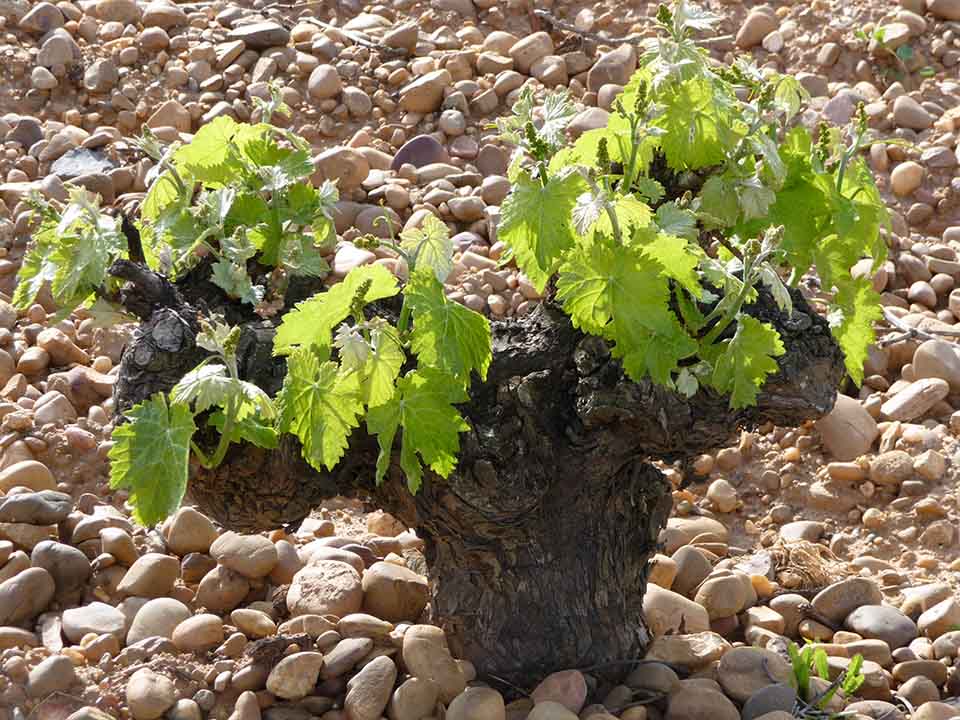 Verdejo often hunkers down in bush vines to resist the wind
Verdejo often hunkers down in bush vines to resist the wind
There are about 70 wineries in Rueda and you can find a list of them in the excellent industry site www.riberaruedawine.com. The following are some notable wineries but there are many to be explored.
Bodegas Menade This organic winery is run by a three innovative siblings and produces extraordinary natural wines.
Belonrade y Lurton is a notable producer of quality wine and one of the early export leaders
Bodegas José Pariente is a producer with a long history and excellent wines
Palacio de Bornos has been producing Verdejo in Rueda for about 40 years and is a major exporter
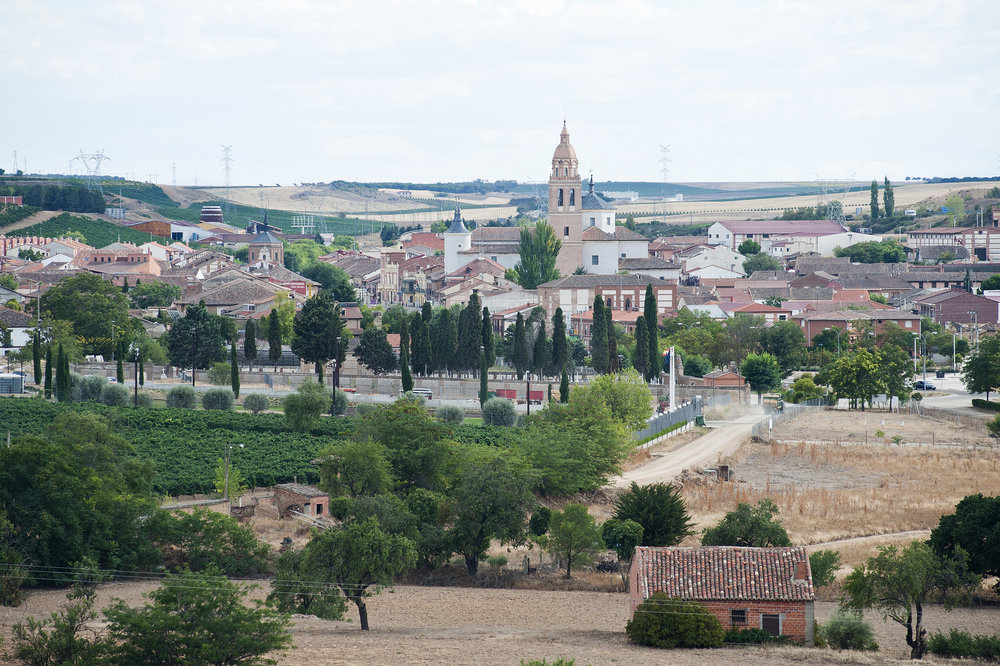 On the wine route in Rueda
On the wine route in Rueda
When To Visit Rueda?
Come wine touring to Rueda and Ribera del Duero whenever you are in Madrid! The winters are chilly and the summers are hot – this is Spain’s interior after all. The weather can be a bit extreme but you will have great white wine if it is warm outside and great red wine if it is cold. Check out www.rutadelvinoderueda.com for information about the wine routes.
Useful Links:
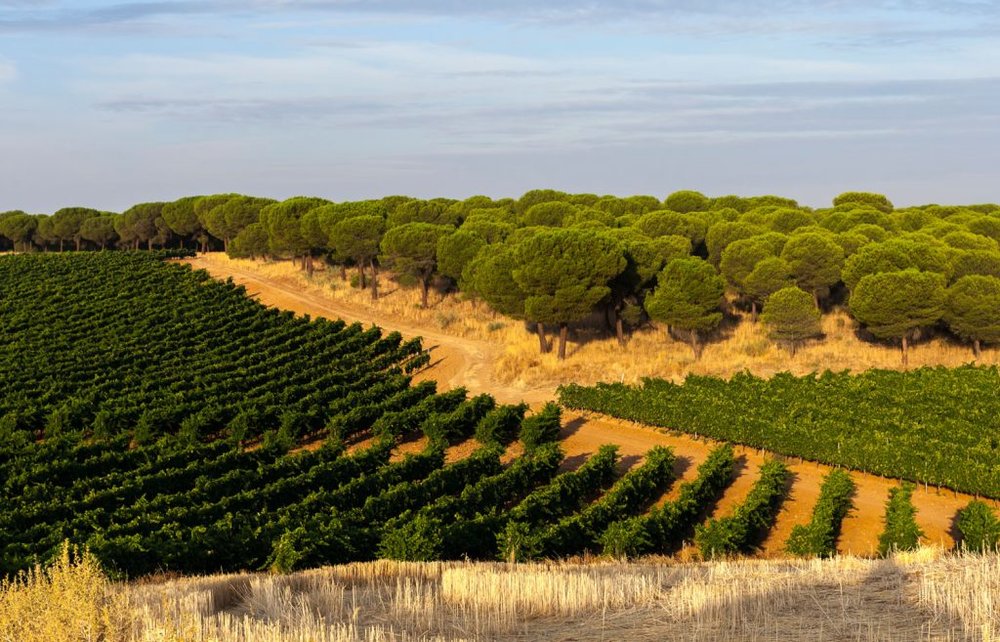 Palacio de Bornos Vineyard
Palacio de Bornos Vineyard
More Great Content On The Wine Beat!
Bierzo – Wine Secrets On The Camino De Santiago
Map and photo credits: www.riberaruedawine.com; www.rutadelvinoderueda.com; Palacios de Born; José Pariente
